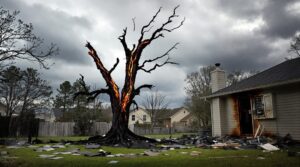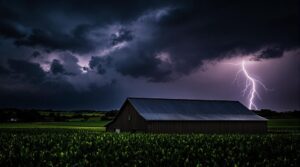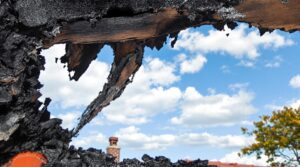Lightning can enter a home through various pathways, including electrical systems, plumbing, and structural components. This poses a risk of electrical shock or fire to occupants. The electrical charge from a lightning strike can be imparted to metal pipes through plumbing, and power surges can create pathways through the home’s electrical system. Understanding how lightning enters homes is essential for taking preventative measures and minimizing risks, which can be explored further for enhanced home safety. Homeowners can implement several strategies to protect their properties against the dangers of lightning, such as installing surge protectors and grounding systems. Additionally, maintaining a safe distance from windows and electrical devices during a storm can reduce the risk of injury. By prioritizing lightning strikes and house safety, residents can significantly mitigate the potential damage and ensure a secure living environment.
Key Takeaways
- Lightning can enter homes through electrical systems, plumbing, and structural damage, posing a risk to occupants.
- Metal plumbing systems can act as conductive pathways for electrical charges from lightning strikes.
- Power surges from lightning strikes can create pathways through a home's electrical system, causing damage and risk of electrical shock.
- Staying away from plumbing fixtures and unplugging devices during storms can minimize the risk of electrical shock from lightning strikes.
- While rare, it is possible to be struck by lightning inside a house, emphasizing the importance of preparedness and safety precautions.
How Lightning Can Enter Your Home
Although a house may seem like a safe refuge from the dangers of lightning, the reality is that lightning can still pose a threat to occupants through various conductive pathways. When lightning strikes your home, it can enter through electrical systems, causing power surges that may damage appliances and wiring. Additionally, plumbing systems can also serve as a conduit for lightning, particularly if they are made of metal. This can lead to structural damage and pose a risk to occupants. A lightning protection system can help mitigate these risks, but it is not a guarantee of safety. To minimize the risk of damage, it is recommended to unplug electronic devices during a storm and stay away from plumbing systems. Understanding how lightning can enter your home is vital to taking steps to protect yourself and your property from the dangers of lightning.
Safety Precautions to Minimize the Risk of Lightning Strikes Indoors
Numerous safety precautions can be taken to minimize the risk of lightning strikes indoors. During a lightning storm, it is essential to stay away from plumbing fixtures, such as sinks and bathtubs, as lightning can impart an electrical charge to metal pipes. Unplugging sensitive electronics and appliances before a storm can help prevent damage from power surges caused by lightning strikes, which can create pathways through a home's electrical system. Using wireless devices like cell phones or cordless phones is safer indoors during storms, as they do not connect to electrical wiring and reduce the risk of electrical shock. Additionally, keeping windows and doors closed can help prevent the entry of lightning and reduce the risk of lightning-related damage inside the home. By taking these safety precautions, individuals can minimize the risk of lightning strikes indoors and prevent potential damage to the electrical system, ultimately ensuring a safer environment.
What to Do If Your Home Is Struck by Lightning
In the event of a lightning strike, knowing the proper course of action is essential to minimize risks and prevent further damage. When a home is struck, immediately check for visible signs of fire or smoke and evacuate if necessary, as the risk of fire is extremely high. After ensuring safety, call 911 to notify the fire department, even if there are no visible flames, as hidden fires may still be present.
Following the initial assessment, inspect the home for damage, focusing on the roof and electrical outlets, as lightning can cause significant structural and electrical damage. It is vital to contact your insurance agency and a trustworthy electrician to assess and document any damage for repairs and future claims. Consider emergency storm damage repair services to address immediate issues and prevent further damage from exposure to the elements, ultimately ensuring the home's stability and safety.








